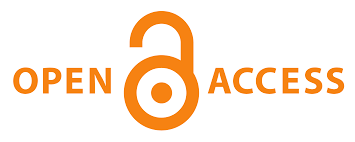The Educational Values in Fairy Tale Cartoon Film
Main Article Content
Erlidawati Erlidawati
Siti Rahmah
The educational value is the value that can form someone’s attitude to be a good person. This value is given by teachers, parents, and others that contain education, morals and manners have a good value in it. Educational value can also be taken from literary works such as films, poetry, novels, stories of fairy tale and so on. One of literary works that can give the knowledge for educational value is fairy tale cartoon film, which telling children’s story about magical and imaginary beings and lands. There were many educational values that could be taken as a lesson in human’s life from fairy tale. This could be taken from fairy tale are moral value, social value, family value. It could be concluded that a good film will give a good impact for everyone has watched the film. The educational value from that film not only for enjoying but also it can be applied in our daily life activities.
Aeni, N., Sakkir, G., & Nasta, M. (2020). Wondershare Filmore in Teaching Vocabulary for Maritime Students. Asian Journal of Technology Management, 11(2), 334-358.
Astuti, R. W., Waluyo, H. J., & Rohmadi, M. (2019). Character Education Values in Animation Movie of Nussa and Rarra. Budapest International Research and Critics Institute-Journal (BIRCI-Journal), 2(4), 215-219.
Bialystok, L., & Kukar, P. (2018). Authenticity and empathy in education. Theory and Research in Education, 16(1), 23-39.
Bowen, H. (Ed.). (2018). Investment in learning: The individual and social value of American higher education.
Cantlon, J. F., Libertus, M. E., Pinel, P., Dehaene, S., Brannon, E. M., & Pelphrey, K. A. (2009). The neural development of an abstract concept of number. Journal of cognitive neuroscience, 21(11), 2217-2229.
Chowdhury, M. (2018). Emphasizing morals, values, ethics, and character education in science education and science teaching. MOJES: Malaysian Online Journal of Educational Sciences, 4(2), 1-16.
Dezuanni, M., & Goldsmith, B. (2015). Disciplining the screen through education: the Royal Commission into the moving picture industry in Australia. Studies in Australasian Cinema, 9(3), 298-311.
Christopley, C. (2017). Developing Students' Vocabulary through Watching English Cartoon Films at SMP BHAKTI. JET (Journal of English Teaching), 3(1), 11-26.
Cleto, S., & Warman, B. (2019). Teaching with stories: Empathy, relatability, and the fairy tale. Marvels & Tales, 33(1), 102-115.
Dewi, V. K. (2013). THE USE OF CARTOON FILMS TO IMPROVE STUDENTS’ SKILL IN WRITING NARRATIVE TEXTS. English Education, 2(1).
Elmubarok, Z. (2020). Membumikan pendidikan nilai. Penerbit Alfabeta Bandung.
Greenhill, P. (2020). Reality, magic, and other lies: Fairy-tale film truths. Wayne State University Press.
Honegger, M. (2020). What Does “Education” Mean: Cultural Values in Educational Language. Journal of Culture and Values in Education, 3(2), 42-53.
Khalsiah, M., Apridar, N. F., & Ratri Candrasari, J. (2020). Fiction and Nonfiction Novel: Characteristics Possessed To Allure The Reader. Journal of Talent Development and Excellence, 12(1), 2081-2088.
Ki Hadjar Dewantara. (1962). Karja Ki Hadjar Dewantara. Jogjakarta: Madjelis Luhur Persatuan Taman Siswa.
Malik, R. S. (2018). Educational challenges in 21st century and sustainable development. Journal of Sustainable Development Education and Research, 2(1), 9-20.
Mukti, P. A. (2012). Improving Students’ Vocabulary Mastery Using Cartoon Films (A Classroom Action Research Conducted at the Seventh Grade in SMP Negeri 1 Grogol Sukoharjo in the Academic Year 2010/2011).
Nuraini, N. (2020). ELF AND IT’S IMPLICATION TO LANGUAGE TEACHING IN THE CLASSROOM. Journal of English Teaching, Linguistics, and Literature, 1(1), 40-51.
Rachmawati, F. (2017). The use of fairy tale films in teaching narrative writing. Journal of English and Education, 5(1), 20-26.
Ratna, N. K. (2005). Sastra dan cultural studies: representasi fiksi dan fakta. Pustaka Pelajar.
Säntti, J., Puustinen, M., & Salminen, J. (2018). Theory and practice in Finnish teacher education: a rhetorical analysis of changing values from the 1960s to the present day. Teachers and Teaching, 24(1), 5-21.
Sayer, I. M., Kristiawan, M., & Agustina, M. (2018). Fairy tale as a medium for children’s character cooperation building. Al-Ta lim Journal, 25(2), 108-116.
Sugianto, G. E., Mingkid, E., & Kalesaran, E. R. (2017). PERSEPSI MAHASISWA PADA FILM “SENJAKALA DI MANADO”(Studi Pada Mahasiswa Jurusan Ilmu Komunikasi Fispol Unsrat). ACTA DIURNA KOMUNIKASI, 6(1).
Windrati, D. K. (2011). Pendidikan nilai sebagai suatu strategi dalam pembentukan kepribadian siswa. Formatif: Jurnal Ilmiah Pendidikan MIPA, 1(1).
Zajda, J. (2018). Researching values education in the classroom: A global perspective. Education and Society, 36(2), 29-47.




